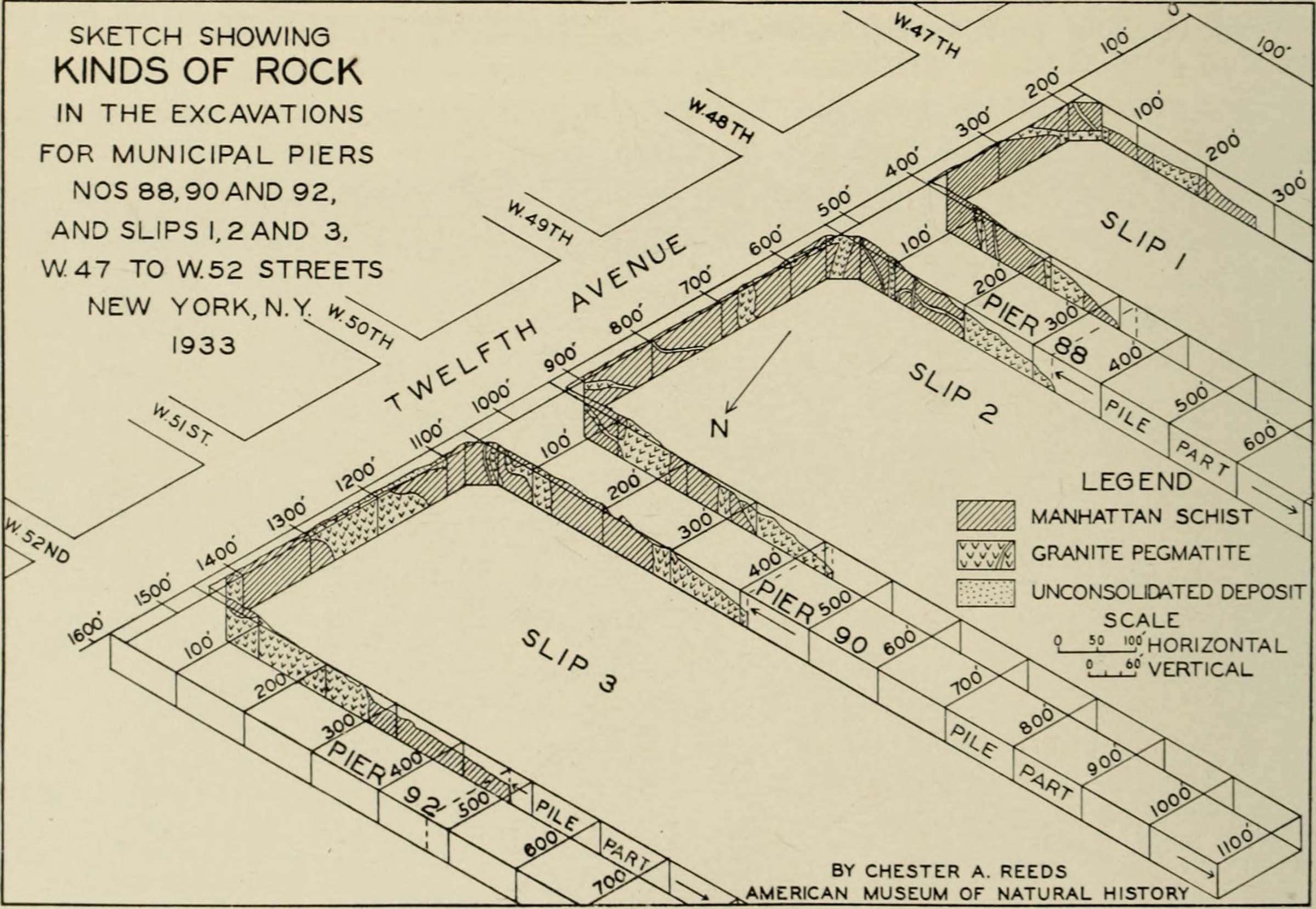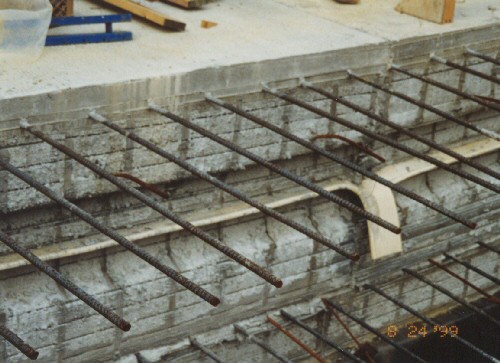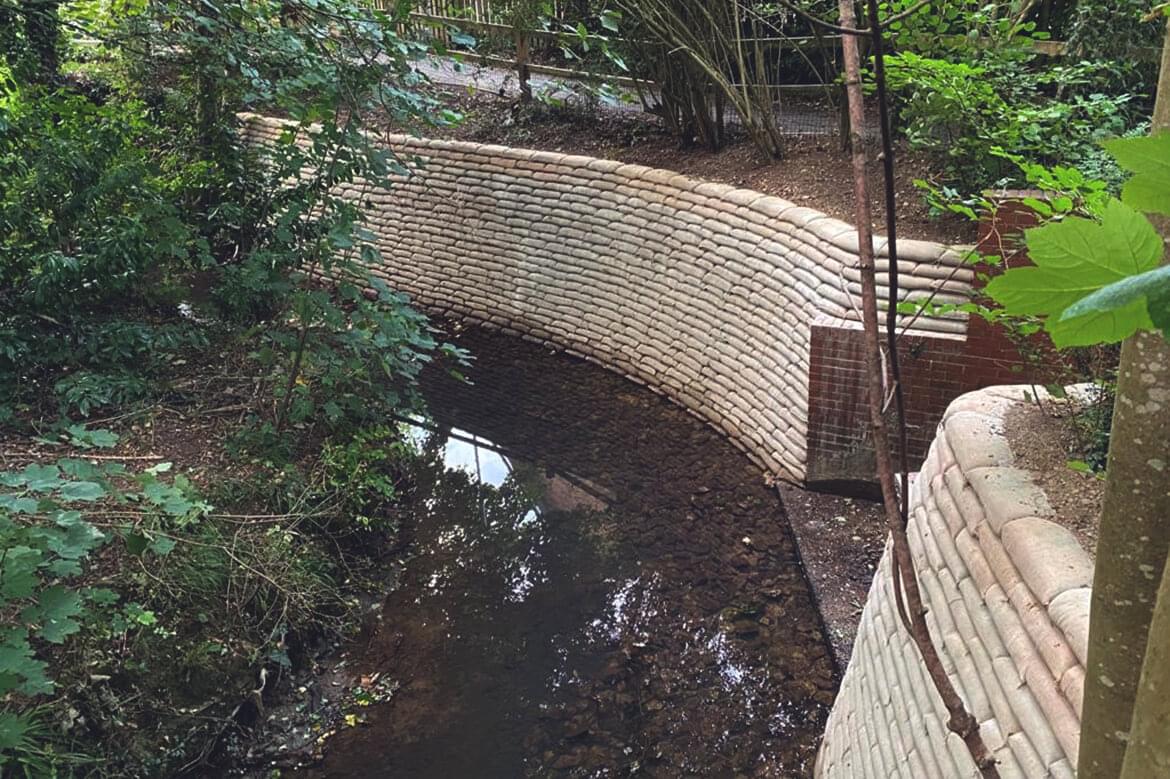Discovering the Various Uses Bulkhead Structures in Modern Design
Bulkhead frameworks play a substantial role in contemporary design, serving both aesthetic and functional functions. They can define rooms, improve storage space services, and improve lighting. In industrial setups, they act as focal factors that show brand identity - Bulkhead on Lake Livingston. Additionally, their assimilation typically sustains sound management and lasting practices. Comprehending the full extent of their applications reveals much concerning contemporary layout patterns and customer experience. What ingenious uses bulkheads might arise in the future?
Defining Bulkhead Frameworks
Bulkhead frameworks play an important function in contemporary design, serving as important components in various building designs. These structures are generally defined as increased ceilings or platforms, usually utilized to hide mechanical systems, electrical wiring, or plumbing. Bulkheads can be found in both industrial and household settings, where they provide a smooth blend of performance and appearances. Their layout can incorporate lighting fixtures and various other ornamental components, boosting the overall visual appeal of a room.
Generally built from materials such as drywall, metal, or timber, bulkheads can be customized to fit the building design and requirements of the building (Bulkhead on Lake Livingston). They offer not only to hide undesirable infrastructure but likewise to develop specified areas within open rooms. By handling the circulation of a space, bulkheads add to the spatial organization, making them a significant facet of contemporary architectural method. Their interpretation envelops both aesthetic and useful measurements.
Practical Applications in Residential Style
Bulkhead structures play an essential duty in residential design by helping with area optimization approaches that maximize functional locations. Moreover, they add visual style elements that enhance the visual charm of living areas. On top of that, these frameworks give crucial architectural assistance solutions, guaranteeing the integrity and safety and security of the home.
Area Optimization Methods
As modern-day residential designs increasingly focus on reliable use space, cutting-edge techniques emerge to maximize functionality without giving up aesthetic appeals. One prominent method entails the integration of bulkhead frameworks, which can define locations while offering important storage space options. These frameworks can be employed to develop upright storage units that enhance both organization and access. In addition, multi-functional furnishings, such as collapsible tables and convertible couches, complements bulkhead styles, allowing rooms to adjust to differing demands. Open up floor plans even more optimize spatial flow, urging flexibility in use. Incorporating integrated shelving and recessed lights within bulkheads likewise contributes to a structured setting, making certain that every square inch of space is made use of effectively and sympathetically within the general style.
Aesthetic Layout Aspects

Architectural Assistance Solutions
In modern-day property layout, a reliable architectural assistance remedy is essential for maintaining the honesty of spaces while enhancing format and capability. Bulkhead structures play a significant function in this scenario, acting as both support and dividing components. They can conceal mechanical systems, such as plumbing and electrical wiring, while giving reinforcement to the ceiling and flooring systems. By tactically putting bulkheads, engineers can create defined locations within open layout, boosting use without jeopardizing structural stability. In addition, these structures can suit illumination fixtures, adding to both visual appeals and functionality. To sum up, bulkhead structures are essential in household layout, using flexible assistance services that boost both the performance and aesthetic appeal of living spaces.
Enhancing Appearances in Commercial Rooms
When industrial spaces accept ingenious bulkhead structures, they not only define physical boundaries but additionally considerably improve the overall visual appeals of the setting. These building aspects function as visual prime focus, drawing interest and creating a feeling of intrigue. By incorporating diverse products such as glass, steel, or wood, bulkheads can mirror a brand name's identification and goal, adding to a cohesive style.
The strategic positioning of bulkheads can control light and shadow, including depth and measurement to or else flat spaces. This interaction can transform a business area right into a welcoming atmosphere, encouraging client involvement. Additionally, the use of shade and appearance in bulkhead design can stimulate particular feelings, enhancing the general consumer experience. Ultimately, the thoughtful assimilation of bulkhead structures raises the visual charm of commercial areas, making them not just useful yet additionally aesthetically enchanting, consequently fostering a long lasting impact on visitors.
Acoustic Performance and Sound Administration
Effective acoustic performance plays an essential function in modern style, particularly within industrial areas where audio monitoring is important. Bulkhead frameworks can greatly improve acoustic high qualities by soaking up noise, lowering echo, and mitigating sound transfer in between areas. These functions are especially valuable in environments such as workplaces, dining establishments, and theaters, where clear communication and a pleasant acoustic experience are paramount.
The strategic placement and layout of bulkheads can assist produce sound-buffer zones, effectively isolating loud locations from quieter ones. Materials used in bulkhead building, such as acoustic panels and soft surfaces, add to their sound-dampening abilities. Furthermore, the consolidation of bulkheads enables the assimilation of sound-absorbing elements without endangering aesthetic appeal. By addressing acoustic efficiency, engineers can produce harmonious settings that improve convenience, boost individual experience, and advertise efficiency, making bulkheads an essential part in the layout of contemporary commercial spaces.
Integrating Bulkheads for Reliable Room Application
Typically ignored, the combination of bulkheads in architectural design can greatly improve area utilization in contemporary structures. These structural aspects offer multiple useful site useful objectives, offering a way to hide mechanical systems, electric circuitry, and plumbing without endangering aesthetics. By tactically placing bulkheads, architects can produce defined areas within open layout, therefore assisting in far better organization and circulation.
Bulkheads can integrate storage space remedies and illumination features, making the most of the capability of otherwise wasted upright room. In domestic settings, they may delineate zones such as kitchens or living areas, while in business areas, they can improve the effectiveness of designs by clearly marking pathways and workspace.
Ultimately, the thoughtful assimilation of bulkheads adds to an extra well organized and visually enticing setting, permitting adaptable spaces that can advance with the needs of their occupants. This technique not only optimizes room yet additionally cultivates an extra unified interaction in between form and function.
Bulkheads in Public Style

Building Aesthetic Enhancements
While several architectural elements go for capability, bulkheads in public design offer a double function by improving visual charm. These frameworks usually produce aesthetic passion via their style, integrating seamlessly with surrounding elements. By employing numerous products, appearances, and shades, bulkheads can contribute to a special identification for public rooms, such as airports, museums, and collections. Their calculated placement assists to delineate areas, guiding visitors while including depth to the total style. Additionally, bulkheads can emphasize lights, creating vibrant atmospheres that change throughout the day. This aesthetic improvement not just boosts the visitor experience but likewise fosters a local color, making bulkheads a vital consideration in contemporary public design. On the whole, bulkheads embody the fusion of form and function.

Structural Support Solutions
As engineers seek innovative methods to enhance the structural integrity of public rooms, bulkheads emerge as necessary parts in the style and building and construction procedure. These frameworks provide essential assistance, especially in locations based on heavy foot traffic or vibrant loads. By distributing weight equally, bulkheads aid stop architectural failure while enabling flexible layout alternatives. In huge places, such as stadiums and convention centers, bulkheads are typically incorporated right into the general architectural structure, making certain stability and security. Additionally, they can help with the incorporation of utilities and mechanical systems, adding to the efficiency of area use. Ultimately, bulkheads stand for a crucial solution in modern-day public style, strengthening both capability and security in community-focused settings.
Environmental Defense Procedures
Including environmental management steps into public design has become significantly vital as urban developers focus on sustainability along with structural assistance. Bulkhead structures serve a find twin purpose in this respect, serving as barriers versus click site disintegration and flooding while at the same time boosting the aesthetic allure of metropolitan landscapes. Their layout commonly includes natural environments such as plants, which can enhance air quality and offer environments for wildlife. In addition, bulkheads can be engineered with absorptive materials that permit for water absorption, lowering overflow and promoting groundwater recharge. This combination of ecological considerations not just preserves the environment yet also promotes neighborhood durability against environment change. By using bulkheads efficiently, designers add to lasting urban development that aligns with modern environmental objectives.
Future Fads in Bulkhead Style
Arising fads in bulkhead layout mirror a growing emphasis on sustainability, advancement, and functionality in modern-day design. Designers are increasingly incorporating environmentally friendly materials, such as recycled compounds and bioplastics, to minimize environmental influence. Additionally, the assimilation of clever technology is becoming common, making it possible for bulkheads to serve multi-functional objectives, consisting of energy storage and climate control.
In metropolitan setups, modular bulkhead systems are acquiring traction, offering adaptability in style and convenience of setup. These systems can be adjusted to different landscapes, permitting reliable area usage. Furthermore, aesthetic factors to consider are evolving; bulkheads are now being made to improve visual charm, usually including imaginative elements that reverberate with local culture.
As environment durability becomes a top priority, future bulkhead layouts will likely prioritize flooding protection and stormwater management, making certain structural stability while resolving environmental challenges. This shift signifies an all natural technique to architecture that fulfills both ecological duties and human needs.
Often Asked Inquiries
What Products Are Generally Used for Bulkhead Building?
Usual materials for bulkhead building and construction include concrete, steel, hardwood, and composite materials. These alternatives give sturdiness, architectural integrity, and resistance to ecological variables, making them suitable for numerous applications in building and design jobs.
How Do Bulkheads Impact Structure Energy Effectiveness?
Bulkheads boost constructing power effectiveness by offering thermal insulation and lowering air leakage (Bulkhead on Lake Livingston). They aid maintain indoor temperature levels, consequently decreasing home heating and cooling down needs, inevitably bring about lower energy prices and improved environmental sustainability
Are There Any Kind Of Structure Codes Details to Bulkhead Frameworks?
Yes, developing codes specific to bulkhead frameworks exist, differing by location. These policies typically attend to safety, structural stability, and access, guaranteeing that bulkheads satisfy needed standards for building and construction and style within an offered territory.
Can Bulkheads Be Quickly Modified or Eliminated Later On?
Bulkheads can commonly be customized or removed, depending on their design and building and construction. However, such alterations might need careful planning and adherence to building ordinance to assure architectural honesty and safety are maintained throughout the process.
What Are the Expenses Connected With Setting Up Bulkhead Structures?
The expenses connected with mounting bulkhead structures can vary significantly, generally influenced by materials, layout complexity, and labor. Usually, expenses vary from moderate to high, depending upon the job's certain needs and location.
Bulkhead structures play a critical role in modern architecture, offering as essential components in numerous structure styles. Bulkhead frameworks play a crucial role in household style by promoting room optimization approaches that make the most of usable locations. Typically ignored, the assimilation of bulkheads in architectural style can significantly boost room usage in contemporary structures. As engineers look for cutting-edge methods to enhance the structural integrity of public rooms, bulkheads arise as necessary elements in the design and building and construction process. The costs linked with mounting bulkhead frameworks can differ substantially, usually influenced by materials, style complexity, and labor.